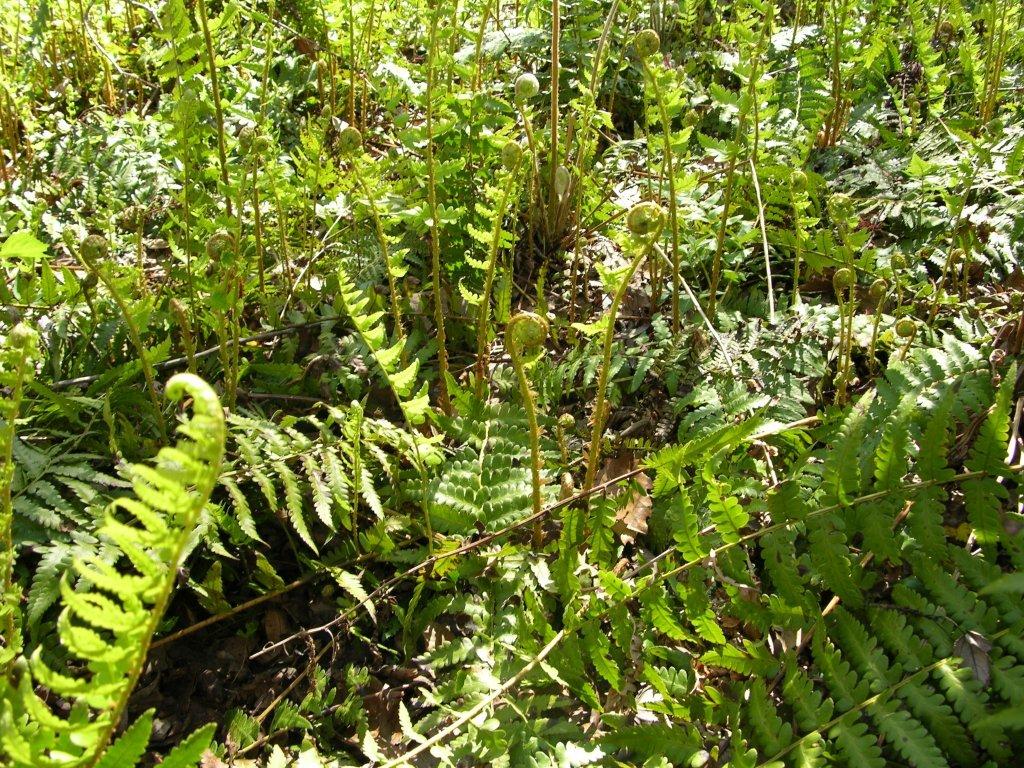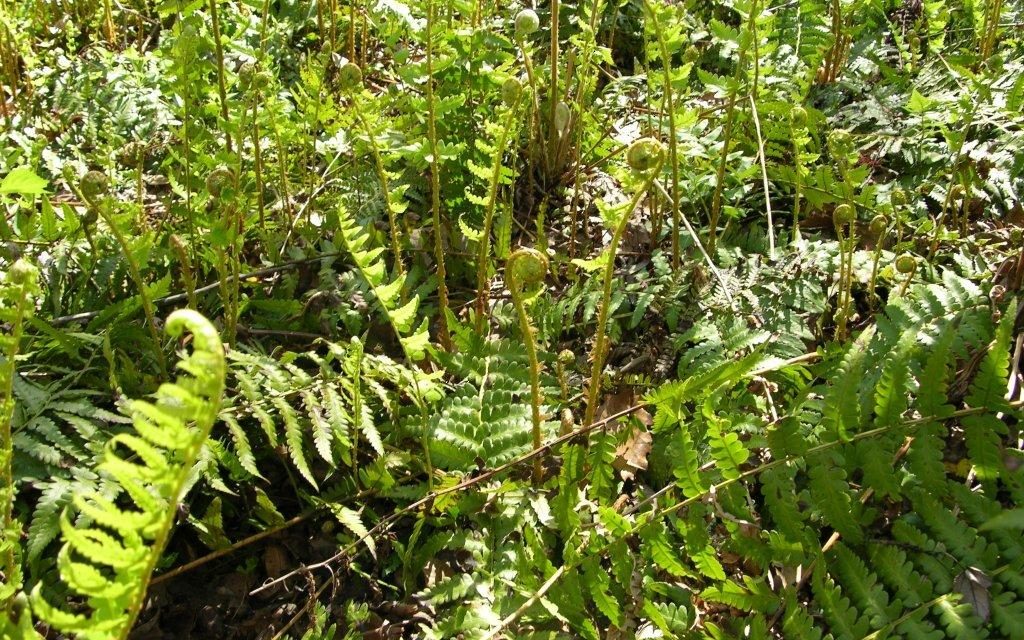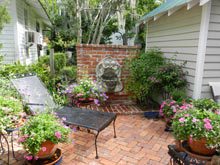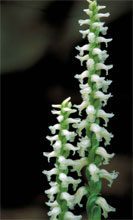 I just got back from a week in the Appalachian Mountains where North Carolina borders Tennessee. It was so nice to go from mid-90 to mid-60 temperatures. We were also at an elevation that was literally in the clouds.
I just got back from a week in the Appalachian Mountains where North Carolina borders Tennessee. It was so nice to go from mid-90 to mid-60 temperatures. We were also at an elevation that was literally in the clouds.
Walking along stream banks and woodland paths I especially enjoyed the different mosses and ferns underfoot. There were wood ferns, New York ferns, and Christmas ferns. The rocks, roofs and ground were covered in mosses, lichens and fungi. These non-vascular primitive plants sometimes grow where there is little or no soil. Moss and fungi are moisture dependent while lichens can live in dry places. Mosses, which don’t have true roots, are often found in cool, damp, and shady places. Lichens come in many shapes and sizes and are a fungal/algal association. The algae are responsible for photosynthesis and the fungi helps to break down the substrate using acid forming compounds. They begin the process of turning rocks into soil.
Ferns and mosses can be used in creating woodland gardens. The combinations of native evergreen and deciduous ferns, perennials and mosses can cool down the hottest summer day. Having mature trees is going to be an asset in the design process, but taking advantage of other forms of shade like the north sides of buildings, fences, walls, or arbors can give the dappled light preferred by these plants. While moisture is necessary for most of the ferns, there are epiphytic ferns like Harts Tongue and resurrection ferns which are drought tolerant. Water features such as bird baths and ponds will provide an evaporative cooling effect and adding fountains, bubblers or pumps can also give the sound effect of moving water.
Soils high in organic matter will also be supportive of the green plants’ growth and health. Add compost and mulches to the beds and paths to help hold moisture and moderate soil temperatures. Inorganic mulches which can support mosses are crushed shell or stone, brick and pebbles. There are recipes for colonizing mosses on brick walks, but you should keep all utility paths safely walkable.
I often get calls from homeowners who want to get rid of moss in their lawns. My response is, “dig it up and bring it to me.” You don’t have to mow it, fertilize it or water it. Besides they are some of Nature’s coolest plants.









